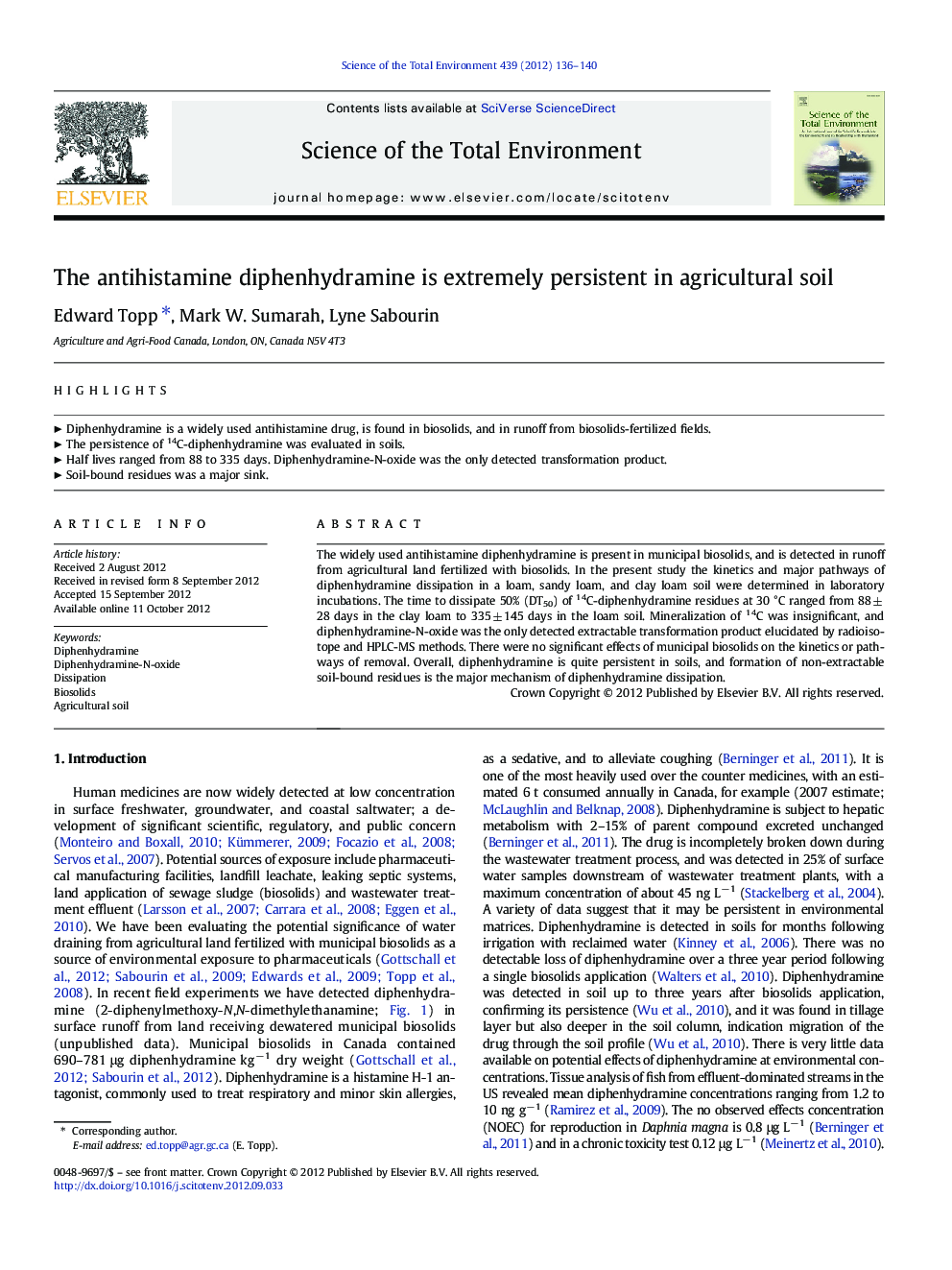| Article ID | Journal | Published Year | Pages | File Type |
|---|---|---|---|---|
| 4429195 | Science of The Total Environment | 2012 | 5 Pages |
The widely used antihistamine diphenhydramine is present in municipal biosolids, and is detected in runoff from agricultural land fertilized with biosolids. In the present study the kinetics and major pathways of diphenhydramine dissipation in a loam, sandy loam, and clay loam soil were determined in laboratory incubations. The time to dissipate 50% (DT50) of 14C-diphenhydramine residues at 30 °C ranged from 88 ± 28 days in the clay loam to 335 ± 145 days in the loam soil. Mineralization of 14C was insignificant, and diphenhydramine-N-oxide was the only detected extractable transformation product elucidated by radioisotope and HPLC-MS methods. There were no significant effects of municipal biosolids on the kinetics or pathways of removal. Overall, diphenhydramine is quite persistent in soils, and formation of non-extractable soil-bound residues is the major mechanism of diphenhydramine dissipation.
► Diphenhydramine is a widely used antihistamine drug, is found in biosolids, and in runoff from biosolids-fertilized fields. ► The persistence of 14C-diphenhydramine was evaluated in soils. ► Half lives ranged from 88 to 335 days. Diphenhydramine-N-oxide was the only detected transformation product. ► Soil-bound residues was a major sink.
